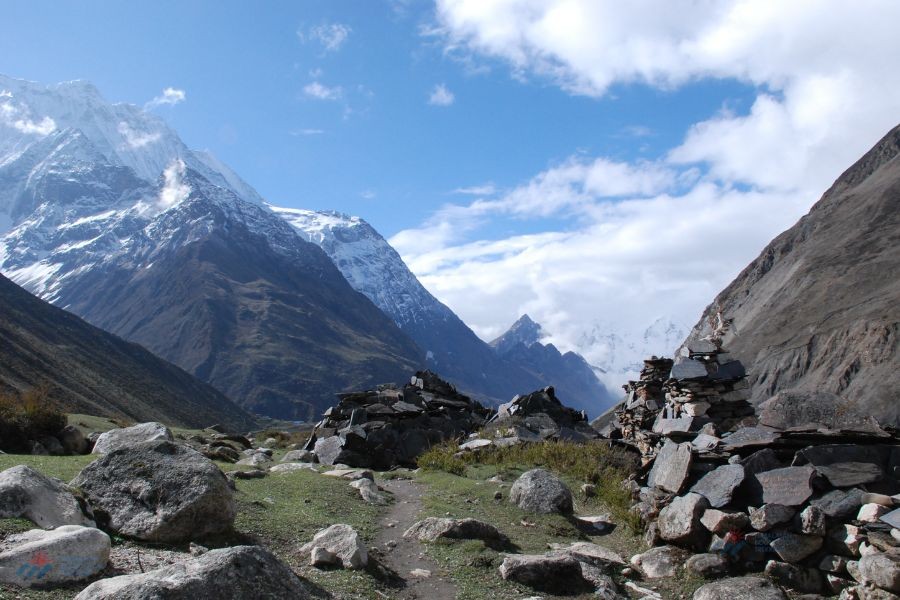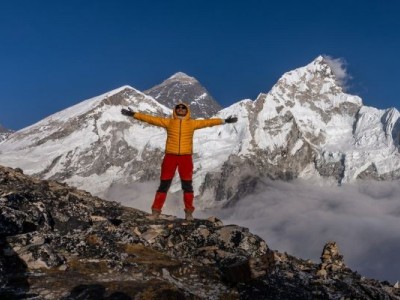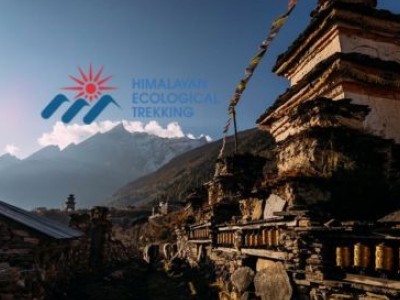Why does Manaslu circuit trek weather matter?
Weather plays a crucial role in determining your Manaslu Circuit experience. The hike passes through a variety of temperature zones, including glacier terrain, alpine meadows, and subtropical rainforest. Each elevation brings different weather challenges that affect your safety and enjoyment.
The Manaslu circuit weather conditions directly impact trail accessibility Route restrictions may be necessary if heavy snowfall blocks the Larkya La Pass. River crossings become hazardous due to landslides caused by monsoon rains. By being aware of these trends, you can steer clear of potentially fatal circumstances.
Temperature variations also affect your physical performance. Extreme cold at high altitudes increases altitude sickness risks and hypothermia dangers. Hot weather in lower elevations can cause dehydration and heat exhaustion. Planning around optimal weather windows maximizes your chances of a successful trek.

Best Months to Visit Manaslu Circuit
Pre-Monsoon (March-May) Conditions
The pre-monsoon season offers excellent Manaslu circuit weather by month conditions. March brings warmer temperatures after winter's harsh conditions. Rhododendrons bloom throughout the region, creating spectacular displays of color against snow-capped peaks.
During this period, daytime temperatures range from 15-20°C at lower elevations and 5-10°C at higher altitudes. Nights remain cold, especially above 4,000m, with temperatures dropping to -5°C. Weather patterns show increasing stability with minimal precipitation.
April and May provide the warmest conditions of the year. These months offer the Best time to trek Manaslu Circuit for those seeking comfortable temperatures. However, afternoon clouds can build up, occasionally bringing light snow at higher elevations.
Monsoon Season (June-August)
The Monsoon weather in Manaslu Circuit makes it challenging conditions for trekkers. Heavy rainfall makes trails slippery and dangerous. Rivers swell dramatically, making crossings hazardous or impossible. Leeches become active in lower elevations, adding another layer of discomfort.
Visibility drops significantly during monsoon months. The trek's picturesque attractiveness is diminished when clouds block out views of the mountains. The constant humidity and rain make camping uncomfortable and gear maintenance difficult. Many tea houses close during this period due to reduced trekker numbers.
Despite these challenges, some experienced trekkers attempt the circuit during monsoon. They gain from less crowded and verdant surroundings. However, we strongly recommend avoiding this season unless you have extensive high-altitude monsoon experience.
The Post-Monsoon (September-November) Conditions
September is the beginning of the most popular trekking season. The Manaslu Circuit trek Weather and Temperature in October provides the best conditions for most trekkers. Post-monsoon clarity offers stunning mountain views, and stable atmospheric pressure reduces weather-related risks.
Manaslu circuit average temperature during this period ranges from 10-15°C during the day at moderate elevations. As the season progresses, the nights get increasingly colder. By November, nighttime temperatures can drop to -10°C at higher camps.
The Manaslu Circuit is very active in October. Weather systems remain predictable, visibility stays excellent, and temperatures feel comfortable for extended trekking. The post-monsoon period provides the best photographic opportunities of the year.
Winter Trekking (December-February)
Manaslu Circuit trek Weather and Temperature in winter present extreme challenges. Heavy snowfall frequently blocks the Larkya La Pass, making crossings impossible. Daytime temperatures rarely exceed freezing at higher elevations.
December still offers some trekking opportunities, especially in the first half of the month. However, conditions deteriorate rapidly as winter deepens. January and February experience the harshest weather, with temperatures plummeting to -25°C at night.
Winter trekking requires extensive mountaineering experience and specialized equipment. Most tea houses close during this period, forcing trekkers to carry camping gear. Only the most experienced and well-prepared adventurers should attempt winter crossings.
Month-by-Month Temperature Guide

January & February Temps
January brings the coldest conditions of the year. At Samagaon (3,530m), daytime temperatures hover around -5°C, while nights drop to -15°C. Higher elevations experience even more extreme conditions, with temperatures reaching -25°C.
February shows slight improvement but remains bitterly cold. Snow covers most of the high-altitude sections, making trail navigation difficult. Ice accumulation on water sources presents additional obstacles for hikers and local populations.
March & April Temps
March marks the beginning of spring warmth. Lower elevations see daytime temperatures rising to 10-15°C. However, nights remain cold, especially above 3,500m. Snow begins melting at moderate elevations, improving trail conditions.
April brings more comfortable temperatures throughout the circuit. Daytime highs reach 15-20°C at lower elevations and 5-10°C at higher altitudes. The warming trend makes this an excellent time for acclimatization and preparation.
May & June Temps
May offers the warmest conditions before monsoon arrival. Daytime temperatures can reach 20-25°C in lower valleys. Even at higher elevations, temperatures become more comfortable for extended trekking.
June marks the beginning of monsoon season, which brings with it increasing humidity and afternoon thunderstorms. Temperatures remain warm, but weather stability decreases significantly. This period requires careful weather monitoring and flexible planning.
July & August Temps
The monsoon season brings high humidity and frequent rainfall. Despite warm temperatures (15-20°C at elevation), the constant moisture makes conditions feel uncomfortable. Cloud cover reduces temperature variations between day and night.
The monsoon season's biggest rainfall usually occurs in August. While temperatures remain relatively warm, the combination of rain, humidity, and poor visibility creates challenging trekking conditions.
September & October Temps
September offers excellent temperature conditions as the monsoon ends. At moderate elevations, daytime temperatures range between 15 and 20 degrees Celsius. The transition period brings decreasing humidity and improving trail conditions.
October provides the most comfortable Manaslu Circuit trek Weather and Temperature in October conditions. A perfect balance of warm days and cool nights creates ideal trekking weather. Crystal clear mountain views and stable atmospheric pressure make this the peak season for photography.
November & December Temps
November begins the transition to winter conditions. Daytime temperatures start dropping, especially at higher elevations. Night temperatures can reach -10°C above 4,000m by month's end.
December ushers in winter's harsh conditions. Snow begins accumulating at higher elevations, and temperatures drop significantly. By month's end, winter weather dominates the entire circuit.
Larkya La Pass Weather & Conditions
Average Snowfall & Wind Speeds
Larkya La Pass has the most severe weather conditions on the entire route. Snow can fall any month of the year, but accumulations become significant from November through March. Wind speeds regularly exceed 50 km/h, creating dangerous wind chill conditions.
The pass remains snow-covered for most of the year, with only brief periods of partial melting during summer months. These conditions require specialized equipment and extensive mountaineering experience for safe crossings.
Altitude-Related Risks
At 5,106m elevation, Larkya La Pass presents serious altitude sickness risks. The combination of intense cold and low oxygen levels produces hazardous conditions for unprepared trekkers. Weather changes can occur rapidly, trapping trekkers in life-threatening situations.
Hypothermia and frostbite risks increase significantly during adverse weather conditions. Wind and precipitation can quickly overwhelm inadequate gear and preparation. Proper acclimatization becomes critical for managing these altitude-related challenges.
When Is Larkya La Most Accessible?
The pass offers the best crossing conditions during October and November, followed by March and April. These periods provide the most stable weather and manageable snow conditions.
Clear weather windows typically last 2-3 days during optimal seasons. Trekkers must be adaptable and willing to wait for favorable conditions. Attempting the pass during poor weather significantly increases accident risks.
Extend Your Trek to Tsum Valley
The sacred Tsum Valley offers an incredible extension to your Manaslu Circuit adventure. The "Hidden Valley," a hidden jewel, offers stunning alpine scenery and a distinctive Buddhist culture. Manaslu circuit weather conditions that favor the main trek also work perfectly for Tsum Valley exploration.
Tsum Valley sits at lower elevations than the main circuit, making it accessible during more months of the year. The valley experiences similar weather patterns but with milder temperatures due to its protected location. This makes it an excellent option for trekkers seeking cultural immersion without extreme altitude challenges.
October and November continue to be the best months to trek the Manaslu Circuit and Tsum Valley, with March through May coming in second. During these periods, you'll experience comfortable temperatures for exploring ancient monasteries and interacting with local communities. The longer hike usually extends your trip by five to seven days.
Weather benefits of having Tsum Valley include lower altitude acclimatization possibilities and protected camping areas. The valley's unique microclimate often provides clearer conditions when higher elevations experience cloud cover. This combined trek provides an ideal balance of cultural exploration and mountain excitement.
Planning for the extended trek requires additional permits and weather considerations. The Tsum Valley can be visited as a side trip from Lokpa or combined into a longer circuit. Weather conditions typically mirror the main trek but with less extreme temperature variations.

Choosing the Ideal Time to Trek the Manaslu Circuit
Balancing Crowds vs. Clear Skies
The Best Time to Trek The Manaslu Circuit strikes a balance between weather and crowds. October offers perfect weather but attracts the most trekkers. March and April provide excellent conditions with fewer people on the trails.
Consider your priorities when choosing trek timing. If you prefer solitude and don't mind slightly challenging conditions, shoulder seasons offer better experiences. Peak season promises the finest weather, but it also means busier routes and higher hotel expenses.
Permits & Seasonal Restrictions
Seasonal weather patterns affect permit availability and restrictions. Some areas may close during extreme weather periods for safety reasons. Check current regulations and weather forecasts before finalizing your trek dates.
Local authorities sometimes impose temporary restrictions during dangerous weather conditions. Stay informed about current conditions and maintain flexibility in your travel plans to accommodate these changes.
Essential Packing Tips for 2025
Clothing & Layering Strategy
Successful Manaslu Circuit trekking requires a comprehensive layering system. Base layers should wick moisture while providing insulation. Merino wool or synthetic materials work best for these conditions.
Mid-layers provide primary insulation and should be adjustable for changing conditions. Down jackets offer excellent warmth-to-weight ratios for cold weather. Outer layers must provide wind and water protection while allowing breathability.
Footwear & Trekking Poles
Proper footwear makes the difference between success and failure on the Manaslu Circuit. Waterproof boots with good ankle support handle rocky terrain and stream crossings. Insulated footwear becomes important in high-altitude and winter environments.
Trekking poles are vital for maintaining stability on steep and uneven terrain.
They reduce knee stress during long descents and provide balance on narrow trail sections. Adjustable poles adapt to varying terrain and user preferences.
Sleeping Bag & Camping Gear
Temperature-rated sleeping bags must handle the coldest expected conditions. A -15°C rated bag provides adequate warmth for most conditions. Down fill offers better warmth-to-weight ratios but loses insulation when wet.
Sleeping pads provide crucial insulation from the cold ground. Closed-cell foam pads work reliably in all conditions but offer less comfort. Inflatable pads provide more comfort but require careful handling to prevent punctures.
Rain & Cold-Weather Protection
Waterproof rain gear becomes essential during the monsoon season and unexpected weather changes. Breathable fabrics prevent overheating during strenuous climbs. Better ventilation management is possible when rain pants and jackets are kept apart.
Cold weather protection includes insulated gloves, warm hats, and face protection. Layering systems work best for hands, allowing fine motor control when needed. Backup gloves prevent disaster if primary gloves become wet or damaged.
Electronics & Navigation Tools
Electronic devices require special protection in harsh mountain conditions. Phones and cameras are shielded from moisture harm by waterproof cases. Extra batteries become essential as cold weather reduces battery life significantly.
GPS devices and paper maps provide navigation backup during poor visibility conditions. Compass skills remain important when electronic devices fail. Headlamps with extra batteries ensure safety during early morning starts and late arrivals.
Complete Manaslu Circuit Packing List
Clothing Checklist
- Base layers: two to three sets of synthetic or merino wool
- Insulation layers: fleece or down jacket
- Outer shell: waterproof jacket and pants
- Trekking pants: 2 pairs of quick-dry material
- Warm hat and sun hat
- Insulated gloves and liner gloves
- Hiking socks: 4-5 pairs of merino wool
- Underwear: 4-5 pairs of moisture-wicking
Technical Gear Checklist
- Backpack: 65-75L capacity
- Sleeping bag: -15°C rating minimum
- Sleeping pad: R-value 4+ for insulation
- Trekking poles: adjustable carbon or aluminum
- Boots: waterproof hiking boots
- Camp shoes: lightweight for tea houses
- Headlamp: with extra batteries
- Water bottles: insulated for cold weather
Health & Safety Items
- First aid kit: comprehensive mountain kit
- Altitude sickness medication
- Water purification tablets or a filter
- Sunscreen: SPF 30+ for high altitude
- Sunglasses: UV protection is essential
- Personal medications
- Toilet paper and a trowel
- Hand sanitizer
Optional Comfort Extras
- Camera with extra batteries
- Power bank for electronics
- Book or e-reader for the rest days
- Playing cards for tea house evenings
- Favorite snacks from home
- Duct tape for gear repairs
- Sewing kit for clothing repairs
Weather-Related Safety Advice

Altitude Sickness Prevention
Weather conditions significantly impact altitude sickness risks. Cold weather increases oxygen consumption and dehydration risks. Stay hydrated and maintain steady ascent rates regardless of weather pressures.
Monitor weather forecasts and adjust acclimatization schedules accordingly. Poor weather may force faster ascents or longer stays at altitude. Flexibility in planning prevents dangerous situations from developing.
Dealing with Hypothermia & Frostbite
Throughout the circuit, cold weather poses a significant risk of hypothermia and frostbite. To stop progression, identify early indications and act right away. Proper clothing systems and nutrition help maintain body temperature.
Emergency procedures include finding shelter, changing wet clothing, and sharing body heat. Prevention remains the best strategy through proper preparation and conservative decision-making during adverse conditions.
Monsoon-Era Flood & Landslide Risks
Can I trek Manaslu Circuit in Monsoon Season? While possible, monsoon trekking presents serious flood and landslide risks. Heavy rainfall destabilizes slopes and creates dangerous river conditions.
Stay informed about current conditions and local warnings. Have evacuation plans ready and maintain communication with local authorities. Consider postponing your trek if conditions become too dangerous.
FAQs about Manaslu Circuit Trek Weather & Temperature
Does Manaslu Weather make the trek Difficult?
Weather conditions make the Manaslu Circuit challenging. Extreme temperature variations, high altitude, and rapidly changing conditions require careful preparation and flexible planning. However, proper preparation and timing allow most fit trekkers to complete the circuit successfully.
Can I trek the Manaslu Circuit in the Monsoon Season?
Monsoon season trekking is possible, but not recommended for most trekkers. Heavy rainfall creates dangerous trail conditions, poor visibility, and increased landslide risks. This season should only be attempted by seasoned monsoon hikers equipped with the right equipment.
How hard is it to trek the Manaslu Circuit in Winter Weather?
Manaslu Circuit trek Weather and Temperature in winter create extremely difficult conditions. Deep snow, extreme cold, and frequent storms make winter trekking dangerous for all but the most experienced mountaineers. Most tea houses close, requiring full camping equipment.
Under which Weather conditions is it Favourable to do Larkya La Pass?
Larkya La Pass crossing requires clear, stable weather conditions with minimal wind. October through November and March through April offer the best crossing windows. Wait for stable high-pressure systems and avoid crossing during storms or poor visibility.
Conclusion
The Manaslu Circuit trek's Weather & Temperature determine your adventure's success more than any other factor. Understanding seasonal patterns, temperature variations, and weather-related risks helps you choose optimal timing and prepare appropriate gear.
October stands out as the premier month for most trekkers, offering stable weather and excellent visibility. However, March through May and September through November all provide viable trekking windows with proper preparation.
Himalayan Ecological Trekking recommends thorough weather research and flexible planning for your Manaslu Circuit adventure. Monitor current conditions, pack appropriate gear, and maintain conservative decision-making throughout your trek. With proper preparation and respect for mountain weather, the Manaslu Circuit offers one of the world's most rewarding trekking experiences.
Contact our experienced guides today to plan your perfectly timed Manaslu Circuit trek. We'll help you navigate the weather challenges and maximize your chances of a successful, safe, and unforgettable adventure in the Himalayas.
Start planning your Manaslu Circuit trek today and experience the magic of the eighth-highest mountain in the world under perfect weather conditions
Inquire Now: [email protected], Online Briefing: WhatsApp: +977 9851006023 (Bikesh)
.jpg)






